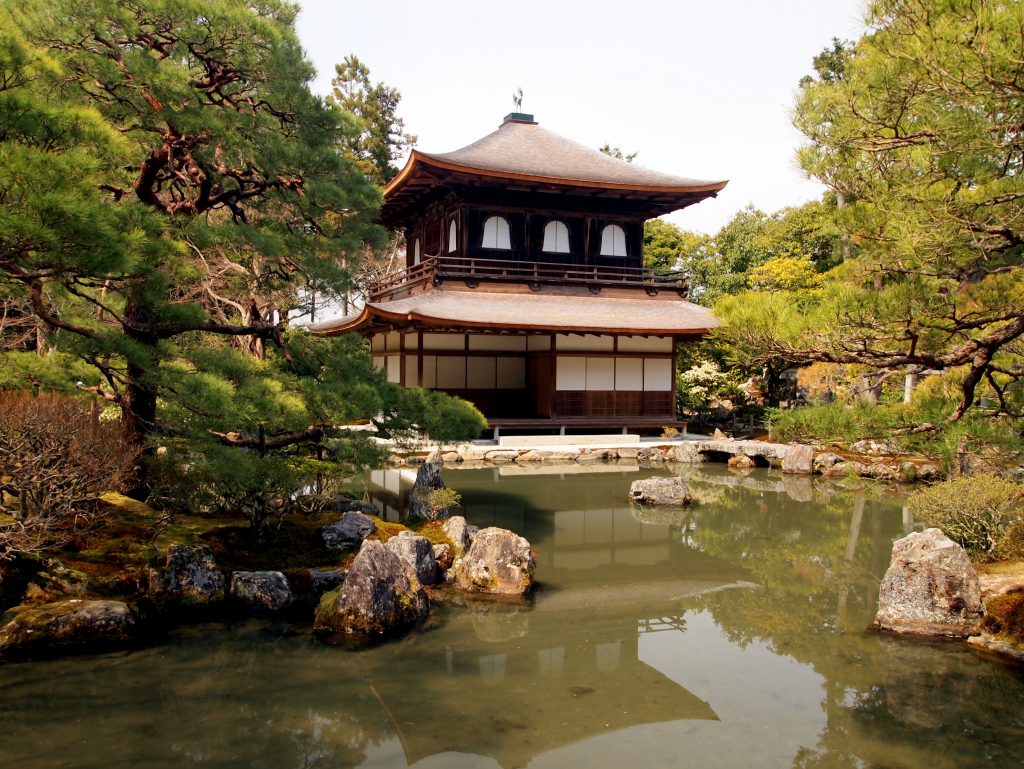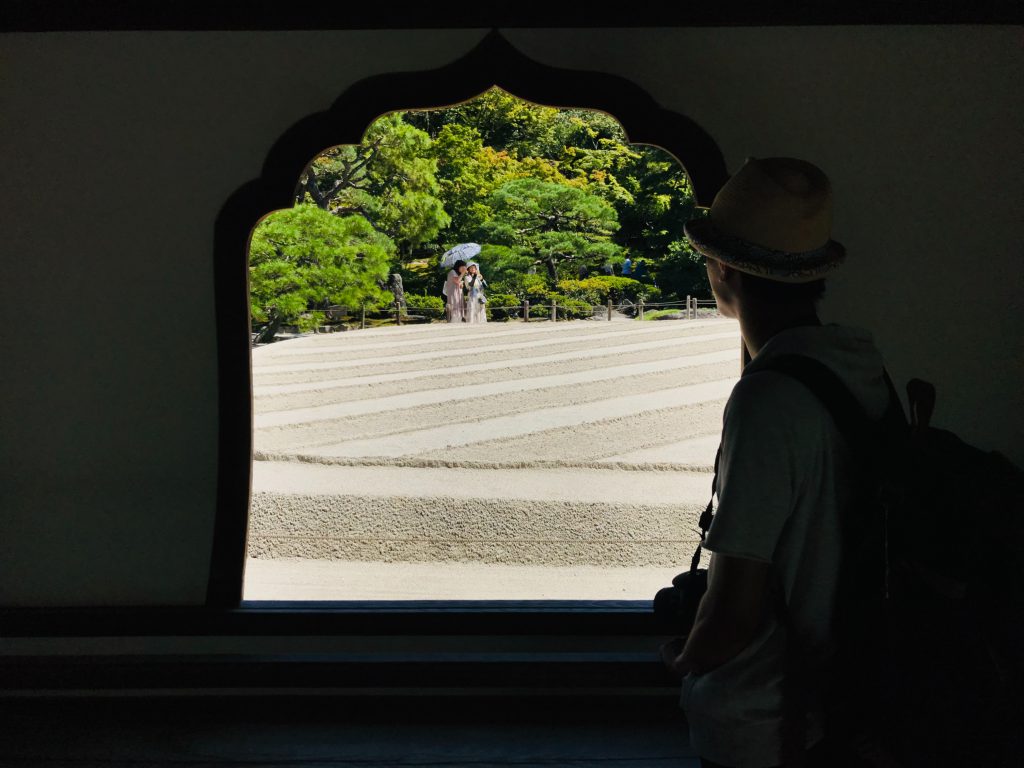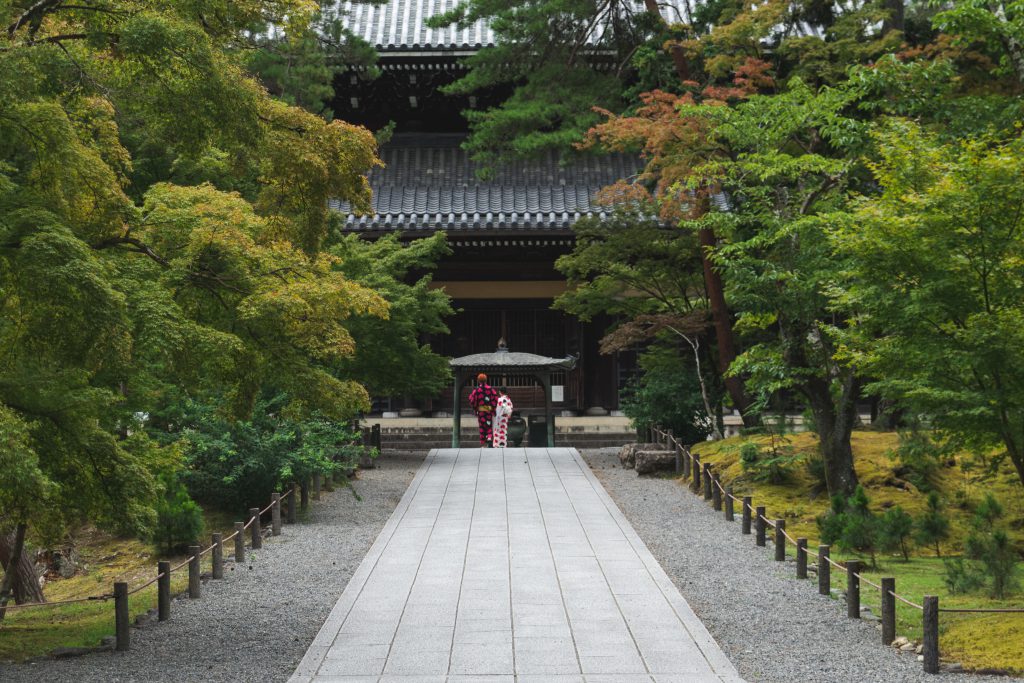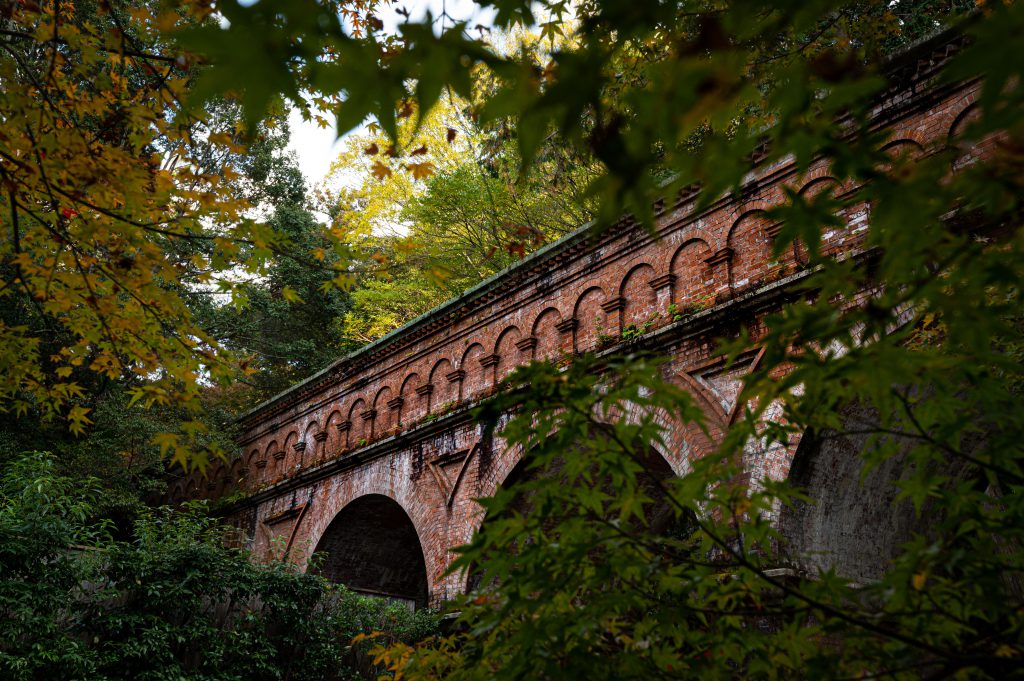Kyoto: Temples along the Philosopher’s Walk Tour
W010
The Philosophy Trail is a walking path along the hydrophobic waterway at the foot of Mt. Higashiyama. It is a favorite walking path of cultural figures such as professors and students of Kyoto University, the national university that has produced the largest number of Nobel laureates in Japan. It is especially known as the place where Kitaro Nishida, a philosopher born in 1870, studied Western philosophy, but developed his own unique Japanese philosophy. The “Path of Philosophy” in Higashiyama, Kyoto, can be compared to Heidelberg in Germany.
HIGHLIGHT
Philosopher's Path: This is a 1.5 km walking path. The stream running along the path is a branch of the Biwako Sosui that connects to the northern part of Kyoto City via Suijikaku. The path starts at Nanzenji Temple and ends at Ginkakuji Temple.
(1) Nanzenji Temple: The main temple of the Nanzenji School of Rinzai Zen Buddhism. The existing Hojo (national treasure), Imperial Gate, and Sanmon (three gates) all date from the Warring States Period to the early Edo Period.
(2) Honen-in: A small temple with few tourists. The bamboo grove glimpsed from the thatched mountain gate is a very impressive sight.
(3) Higashiyama Jishoji Temple (Silver Pavilion): Built in the late 15th century by Muromachi Shogun Ashikaga Yoshimasa. There are many buildings, but the Ginkaku (Silver Pavilion) and Tougudo (East Gugudo), the Kannon Hall, are particularly famous. The simple but meticulous architectural style later became the prototype for the samurai warrior style, the architecture of samurai residences in general. The samurai style spread to merchant houses and inns throughout the Edo and Meiji periods, and can be considered an important prototype of Japanese architecture.
Other attractive examples include Eikando Hall, famous for its autumn foliage, and the tea rooms of famous Japanese confectionery stores.
WHAT YOU CAN EXPECT
Nanzenji Temple
Dating back to the 13th century, Nanzenji is one of the most important Zen temples in Japan, as well as the head temple of the Rinzai sect of Buddhism. A large complex, its most famous structure is the two-story Sanmon gate, which welcomes you at the entrance of the temple. The main hall is also home to an impressive rock garden, as well as treasured artworks depicted on its sliding doors.
Suirokaku Aqueduct
To the right side of Nanzenji Temple, there is Suirokaku Aqueduct, one of the oldest Western structures in modern Japan. It connects to Lake Biwa Canal, which was constructed to draw water for the northern part of Kyoto during the late nineteenth century. The striking structure contrasts magnificently against its natural backdrop, and it is a popular sight for photographers.
Philosopher’s Walk
The Philosopher’s Walk is a stone path of about 1.5km that goes along the Lake Biwa Canal. It is lined by cherry trees and is particularly picturesque during the cherry blossom and autumn leaves seasons. The area has been known as "Philosopher’s Walk" since 1972, as it was named after famed philosophers Kitaro Nishida and Hajime Tanabe, who liked to practice meditation by walking along the road.
Honen-in Temple
Honen-in is a small temple with few tourists, giving it a serene, natural environment. Surrounded by bamboo groves, it is visited for its simple beauty. The most prominent feature of the temple is its thatched gate, which is covered in moss and surrounded by canopying maple trees. Another popular attraction is the unusual raised sand gardens, which display different scenes every season.
Ginkakuji Temple
Ginkakuji was built as the mountain lodge of a powerful fifteenth-century shogun. It was modeled after the Kinkakuji (the “Golden Pavilion”), which had in turn been built by the shogun built by the shogun’s leader. Today, it is one of the most representative early examples of shoin-style architecture, the most influential style of traditional Japanese design. It is known for its serene, Zen atmosphere, and is home to an attractive moss garden and a unique sand cone structure. At the top of the temple’s hill, there are also panoramic views of the city below.
More info
Meeting Place:
The meeting place for this tour is JR Kyoto Station's Rooftop Sky Garden.
Transportation:
You will travel by subway to Nanzenji Temple.
The tour route is as follows:
JR Kyoto Station Rooftop Sky Garden → Nanzenji Temple → Philosopher’s Walk → Honen-in Temple → Ginkakuji Temple → JR Kyoto Station
The tour will end at JR Kyoto Station.
Want to experience more after this tour? We recommend the following:
W002: Kyoto’s Higashiyama: Tradition, Art & Religion Tour
W003: Gion Night Tour
Itinerary
JR Kyoto Station Rooftop Sky Garden → Nanzenji Temple → Philosopher’s Walk → Honen-in Temple → Ginkakuji Temple → JR Kyoto Station
CANCELLATION POLICY
In the event of cancellation, the following fees will apply:
(1) 3-14 days prior to the program: 20% of the program fee
(2) 2 days prior to the program: 50% of the program fee
(3) One day before the program or on the day*: 100% of the program fee
*In the case of a no-show, a separate remittance fee will also be charged.
There are no reviews yet. Be the first one to write one.
PROGRAM FEE(Excl. consumption tax)
- Fee per Person
- 15,800JPY
- STARTING TIME
-
(1) 8:15~
(2) 13:15~
- DURATION
- 210 mins
- LOCATION
-
Nanzen-ji Temple, The Philosopher’s Walk, Honen-in Temple, Ginkaku-ji Temple
- MINIMUM NUMBER OF PARTICIPANTS
- 2 people
- INCLUSIONS
- ・Guided tours by nationally licensed tour guides
・Admission to Honen-in Temple and Jishoji Temple
- EXCLUSIONS
- ・ Food & drink, shopping expenses, etc.
・ Transportation to the meeting place
・ Transportation from the tour end place
※ If you wish to be picked up from your hotel, an additional 3,300 yen (tax included) will be added to the fee.
- NOTIFICATIONS
- ◆ This is a shared program. Multiple groups may take this program at once.
◆ Please follow the instructions of the guide during the program. We will not be responsible for any accidents that may occur due to disobedience of the guide's instructions.
◆ Walking tours may be subject to change due to facility closures or weather conditions. In such cases, we will guide you to alternative locations.
◆ The program duration stated is only approximate. Please note that the duration of the experience may vary depending on the situation and the number of guests.
◆ For walking tours, you are requested to meet our guide at a designated meeting place.
If you are late, please contact us at 03-6432-0195 during business hours (weekdays from 9:00 to 18:00).
We may also provide you with an additional telephone number to contact in advance of the program.
◆ If you require special assistance during the program due to any of the following: religious reasons, physical conditions, illness, allergies, or the age of children, please be sure to indicate this in the remarks section of the reservation form at the time of application.
Please note that we cannot guarantee any arrangements or changes to the program without prior inquiry.
◆ The minimum number of participants for this program is 2.
◆ This program is typically held in English. However, languages other than English can also be supported.
Please inquire at info@truejapantours.com for details.
◆ Our business hours are from 9:00 to 18:00 on weekdays.
Please note that inquiries received outside of business hours will be handled on the next business day.
The application deadline for this program is 10:00 a.m. (Japan Standard Time) five business days prior to the tour date.
If you wish to apply after the deadline, please contact us at info@truejapantours.com.
◆ Please note that we cannot guarantee arrangements for programs purchased after the application deadline without prior inquiry.
Stocker
BOOKMARKS
- Not available.






